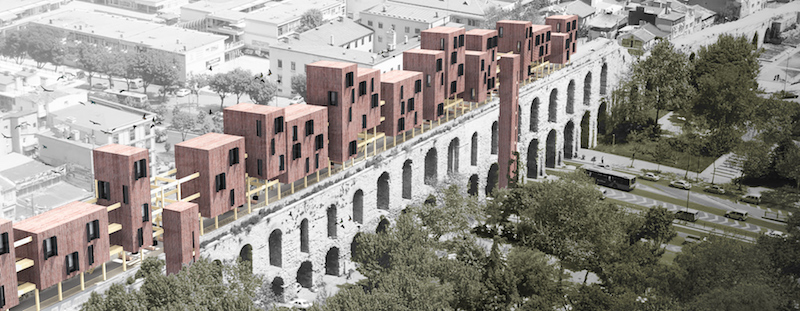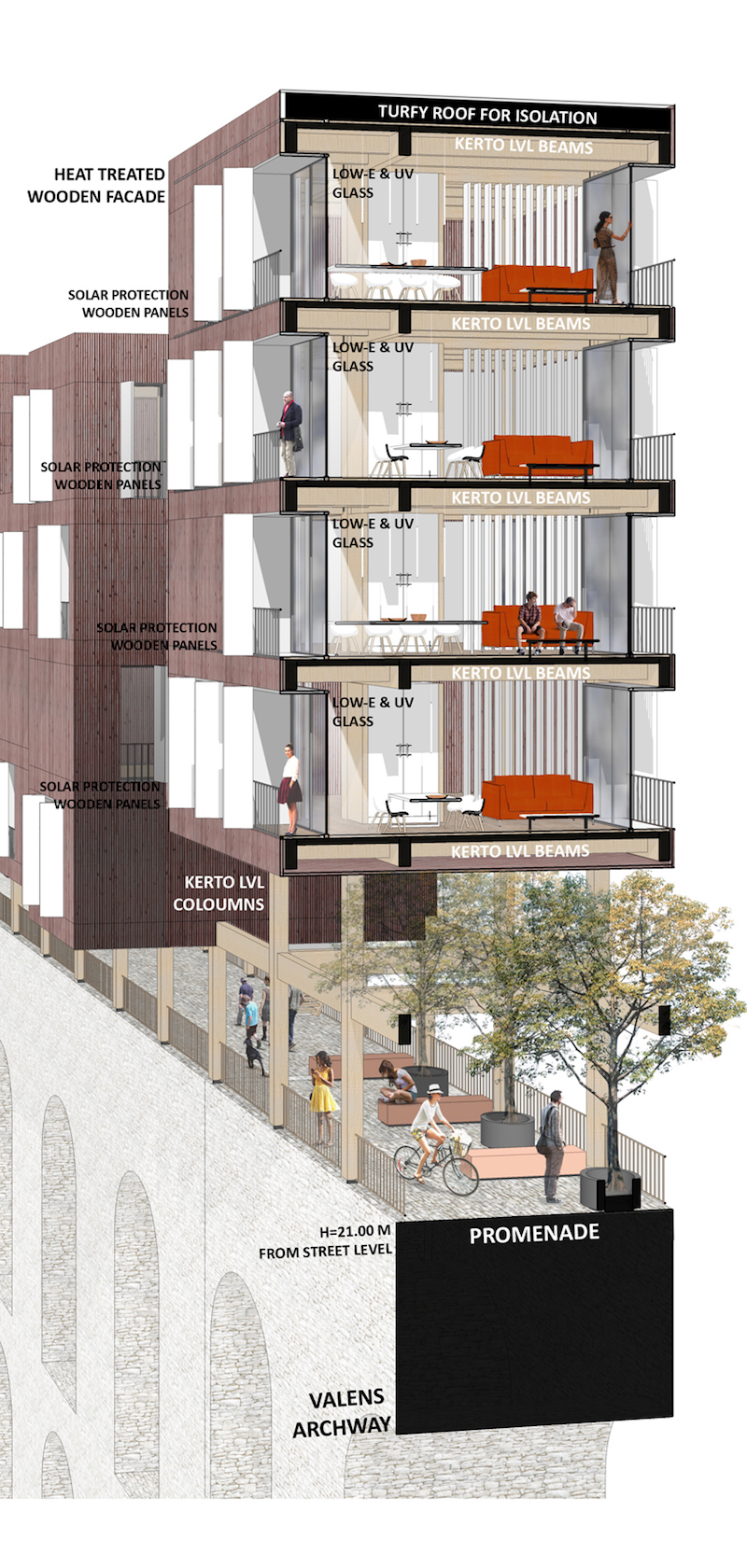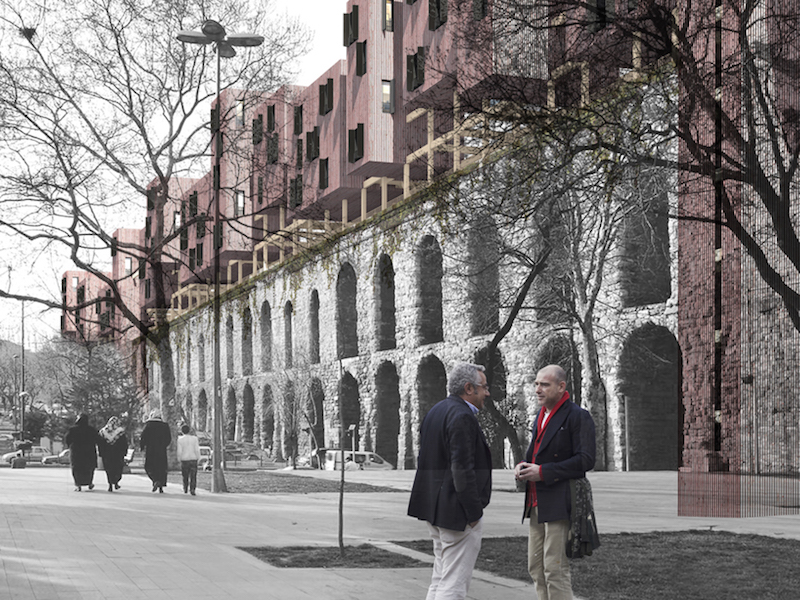The Valens Archway, an aqueduct in Istanbul built at the end of the 4th century by the Roman Emperor Valens, provided the city with water during the middle century. Today, however, the remaining section of the archway is nothing more than a forgotten landmark in the busy and historic Istanbul district of Fatih.
But it may not be forgotten for long, as Superspace, a Turkish architecture studio, has plans to transform the over 3000-foot-long structure into a recreational and residential space.
According to designboom.com, the proposal suggests building a vertical wooden grid above the archways that would serve as a linear underlay for wooden housing modules suspended above the walkway. Each volume of wooden housing units would be clad in a heat-treated wooden façade. The wood houses and the old stonework of the aqueduct would create a dichotomy of old and new, hard and soft, and heavy and light, the architects say.
The goal of the project is to generate “an alternate elevated life, keeping tabs on the city, instead of just being watched,” Superspace writes of the project on the studio’s website.
 Rendering courtesy of Superspace.
Rendering courtesy of Superspace.
 Rendering courtesy of Superspace.
Rendering courtesy of Superspace.
 Rendering courtesy of Superspace.
Rendering courtesy of Superspace.
 Rendering courtesy of Superspace.
Rendering courtesy of Superspace.
Related Stories
| Nov 13, 2013
Installed capacity of geothermal heat pumps to grow by 150% by 2020, says study
The worldwide installed capacity of GHP systems will reach 127.4 gigawatts-thermal over the next seven years, growth of nearly 150%, according to a recent report from Navigant Research.
| Nov 8, 2013
Net-zero bellwether demonstrates extreme green, multifamily style
The 10-unit zHome in Issaquah Highlands, Wash., is the nation’s first net-zero multifamily project, as certified this year by the International Living Future Institute.
| Nov 6, 2013
Dallas’s goal of carbon neutrality by 2030 advances with second phase of green codes
Dallas stands out as one of the few large cities that is enforcing a green building code, with the city aiming to be carbon neutral by 2030.
| Oct 30, 2013
15 stellar historic preservation, adaptive reuse, and renovation projects
The winners of the 2013 Reconstruction Awards showcase the best work of distinguished Building Teams, encompassing historic preservation, adaptive reuse, and renovations and additions.
| Oct 30, 2013
11 hot BIM/VDC topics for 2013
If you like to geek out on building information modeling and virtual design and construction, you should enjoy this overview of the top BIM/VDC topics.
| Oct 28, 2013
Urban growth doesn’t have to destroy nature—it can work with it
Our collective desire to live in cities has never been stronger. According to the World Health Organization, 60% of the world’s population will live in a city by 2030. As urban populations swell, what people demand from their cities is evolving.
| Oct 25, 2013
$3B Willets Points mixed-use development in New York wins City Council approval
The $3 billion Willets Points plan in New York City that will transform 23 acres into a mixed-use development has gained approval from the City Council.
| Oct 23, 2013
Gehry, Foster join Battersea Power Station redevelopment
Norman Foster and Frank Gehry have been selected to design a retail section within the £8 billion redevelopment of Battersea Power Station in London.
| Oct 18, 2013
Meet the winners of BD+C's $5,000 Vision U40 Competition
Fifteen teams competed last week in the first annual Vision U40 Competition at BD+C's Under 40 Leadership Summit in San Francisco. Here are the five winning teams, including the $3,000 grand prize honorees.
| Oct 18, 2013
Researchers discover tension-fusing properties of metal
When a group of MIT researchers recently discovered that stress can cause metal alloy to fuse rather than break apart, they assumed it must be a mistake. It wasn't. The surprising finding could lead to self-healing materials that repair early damage before it has a chance to spread.

















